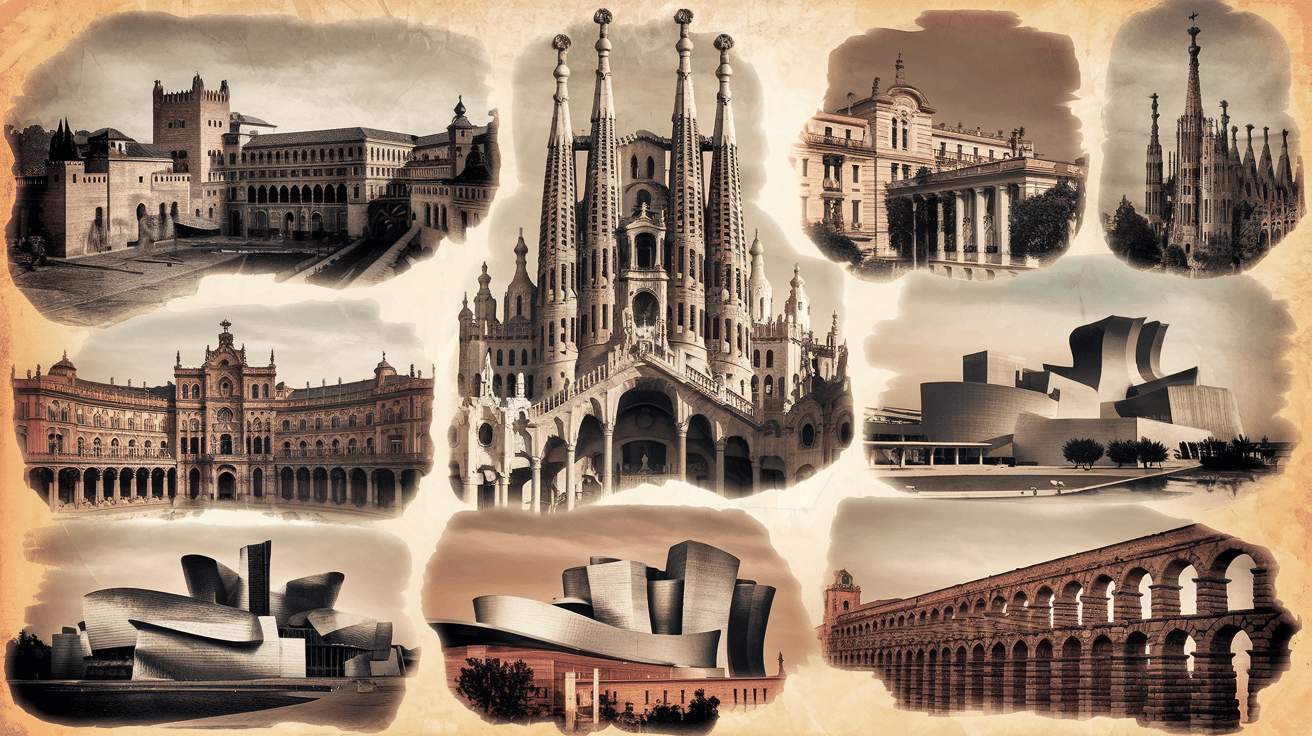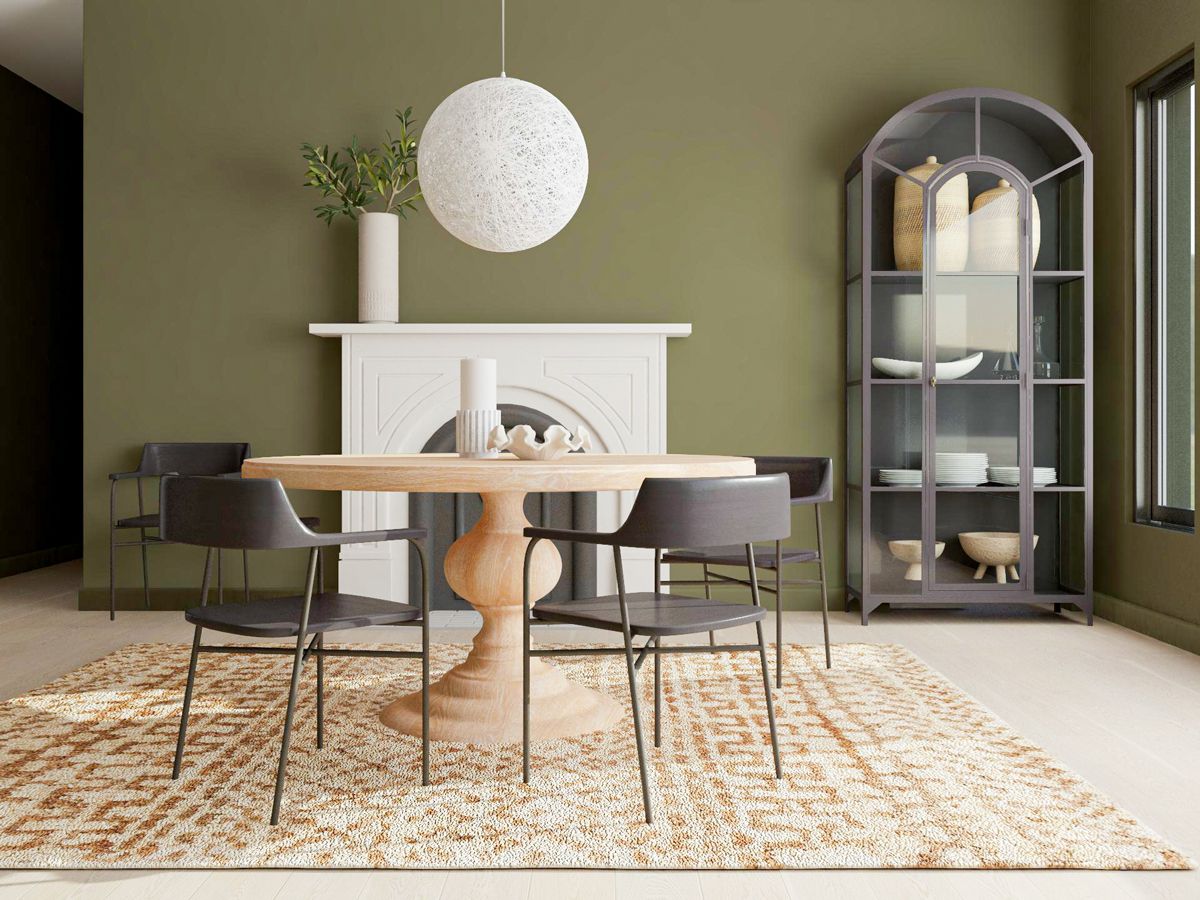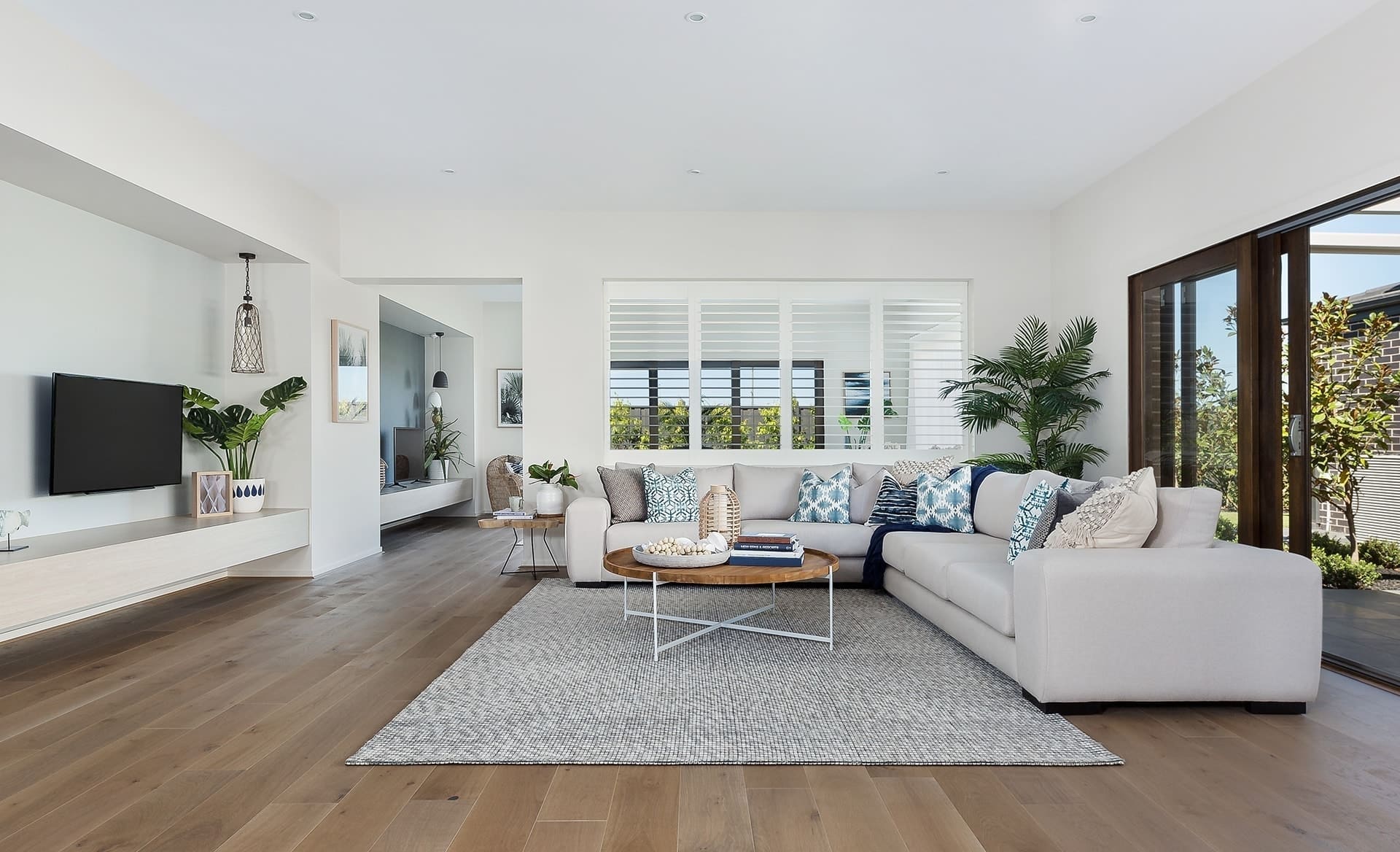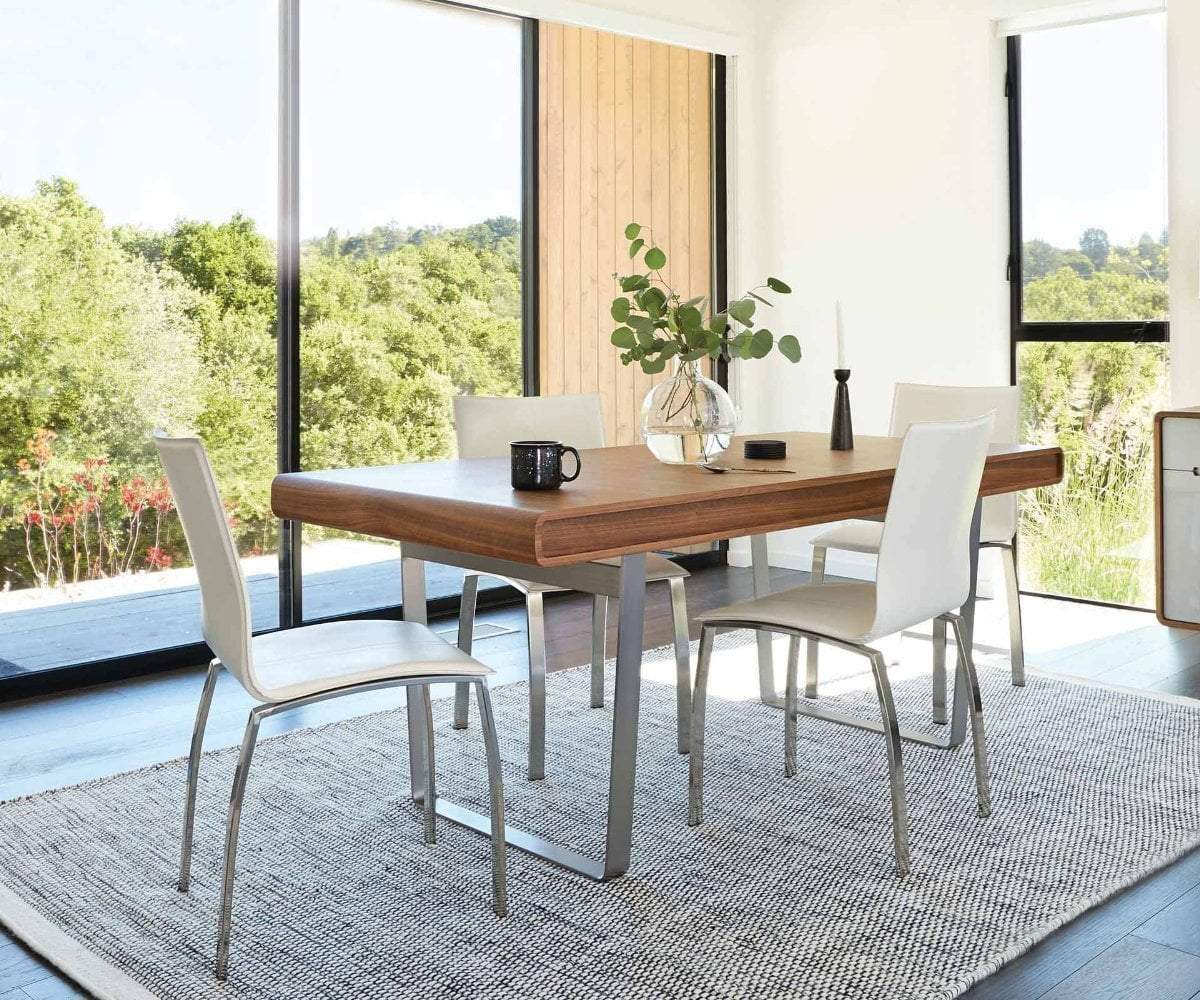20 Famous Spanish Architecture Landmarks
Spain is home to some of the most beautiful architecture in the world, but with so many incredible structures, it’s difficult to know where to begin.
For history lovers, architecture fans, or curious travelers, narrowing down the must-see buildings can be a challenge.
This blog highlights 20 of the most famous Spanish architectural wonders, from ancient Roman structures to modern masterpieces.
We’ll take you through the evolution of Spain’s architecture, showcasing the diverse styles that have shaped its rich cultural history.
By the end, you’ll gain a deeper appreciation for Spain’s architectural gems and know exactly which landmarks to visit.
Get ready to see Spain through its iconic buildings!
A Timeline of Spanish Architecture Styles
Spain’s buildings tell the stories of its ancient cultures. Over the years, many creators have shaped its unique architectural style.
Each structure represents a different time in history. From Roman roads to modern designs, Spanish buildings are living examples of the past.
Pre-Roman and Roman Influence
The foundations of Spanish architecture begin with remarkable Roman engineering.
The Segovia Aqueduct stands as a testament to Roman construction skill, with its dual-tiered arches extending nearly 30 kilometers. Built without mortar, its massive granite blocks remain perfectly balanced after 2,000 years.
The Roman Theater in Mérida shows the technical prowess of these builders. Its acoustics allow voices to carry throughout the space without amplification.
The structure includes an orchestra pit, stage, and tiered seating for thousands of spectators.
Roman villas dot the Spanish countryside, featuring mosaic floors that display intricate patterns and scenes from mythology.
These homes included advanced heating systems called hypocausts, where hot air circulated under raised floors.
Moorish and Mudéjar Architecture
When Islamic rulers arrived in Spain, they brought incredible architectural innovations.
The Alhambra in Granada stands as a perfect example of their artistic genius. Its walls contain detailed stucco work with mathematical patterns that repeat.
The Court of the Lions features a central fountain supported by twelve marble lions, each one unique in its carving.
The Mosque-Cathedral of Córdoba represents another masterpiece, blending Islamic and Christian architectural elements in a unique structure.
Its forest of columns creates a hypnotic interior space with striped arches that seem to extend infinitely.
The mihrab, or prayer niche, contains some of the most detailed Byzantine mosaics in Spain.
The Giralda Tower in Seville began as a minaret and later incorporated bell tower elements. Its ramps rather than stairs allowed officials to ride horses to the top for calls to prayer.
Gothic and Romanesque Churches
Medieval Spanish architecture reached new heights through magnificent religious buildings.
The Santiago de Compostela Cathedral, a key pilgrimage site, showcases beautiful Romanesque and Gothic elements. Its Pórtico de la Gloria contains over 200 carved figures that appear to move and interact with one another.
The building’s granite exterior has gained a distinctive patina from centuries of rain and sun.
Toledo Cathedral represents another architectural marvel, with its soaring arches and elaborate stone carvings that tell stories of faith and artistic skill.
The Transparente, an ornate skylight, brings natural illumination to the altar through a clever arrangement of windows and openings. The cathedral’s sacristy houses works by El Greco, Goya, and Velázquez.
Burgos Cathedral stands as one of Spain’s most comprehensive Gothic structures. Its spires reach skyward, while flying buttresses allow for massive stained glass windows that bathe the interior in colored light.
Renaissance and Baroque Periods
During the Renaissance and Baroque eras, Spanish architecture became more ornate and dramatic.
The Royal Palace of Madrid demonstrates the grandeur of this period with its impressive facade and intricate interior designs.
The palace contains more than 3,000 rooms decorated with frescoes, tapestries, and elaborate plasterwork. Its main staircase, made from a single piece of San Agustín marble, serves as a focal point for visitors.
Seville Cathedral emerged as another significant landmark, showcasing the architectural ambition of the time. Its massive interior could fit an entire medieval church within its central nave.
The tomb of Christopher Columbus resides here, carried by four figures representing the kingdoms of Spain.
The Plaza Mayor in Madrid exemplifies urban planning from this period. Surrounded by uniform buildings with consistent facades, the square creates a harmonious outdoor room for public gatherings and celebrations.
Modernism and Antoni Gaudí
No discussion of Spanish architecture is complete without mentioning Antoni Gaudí. His revolutionary designs changed Barcelona’s landscape.
The Sagrada Família, still under construction, represents his most famous work.
Its distinctive towers seem to grow from the base, while light enters through colored glass to create an atmosphere that changes throughout the day.
Casa Milà and Casa Batlló show his unique approach, blending organic shapes with incredible artistic detail.
Casa Batlló’s facade appears to shift and move in different lights, with balconies resembling masks or skulls. Casa Milà contains no straight lines. Instead, it follows the curves found in nature.
Park Güell demonstrates Gaudí’s ability to integrate architecture with the natural landscape. Its curved benches follow the contours of the human body, while columns mimic tree trunks supporting the weight above.
Must-See Architectural Buildings in Spain
1. Alhambra, Granada
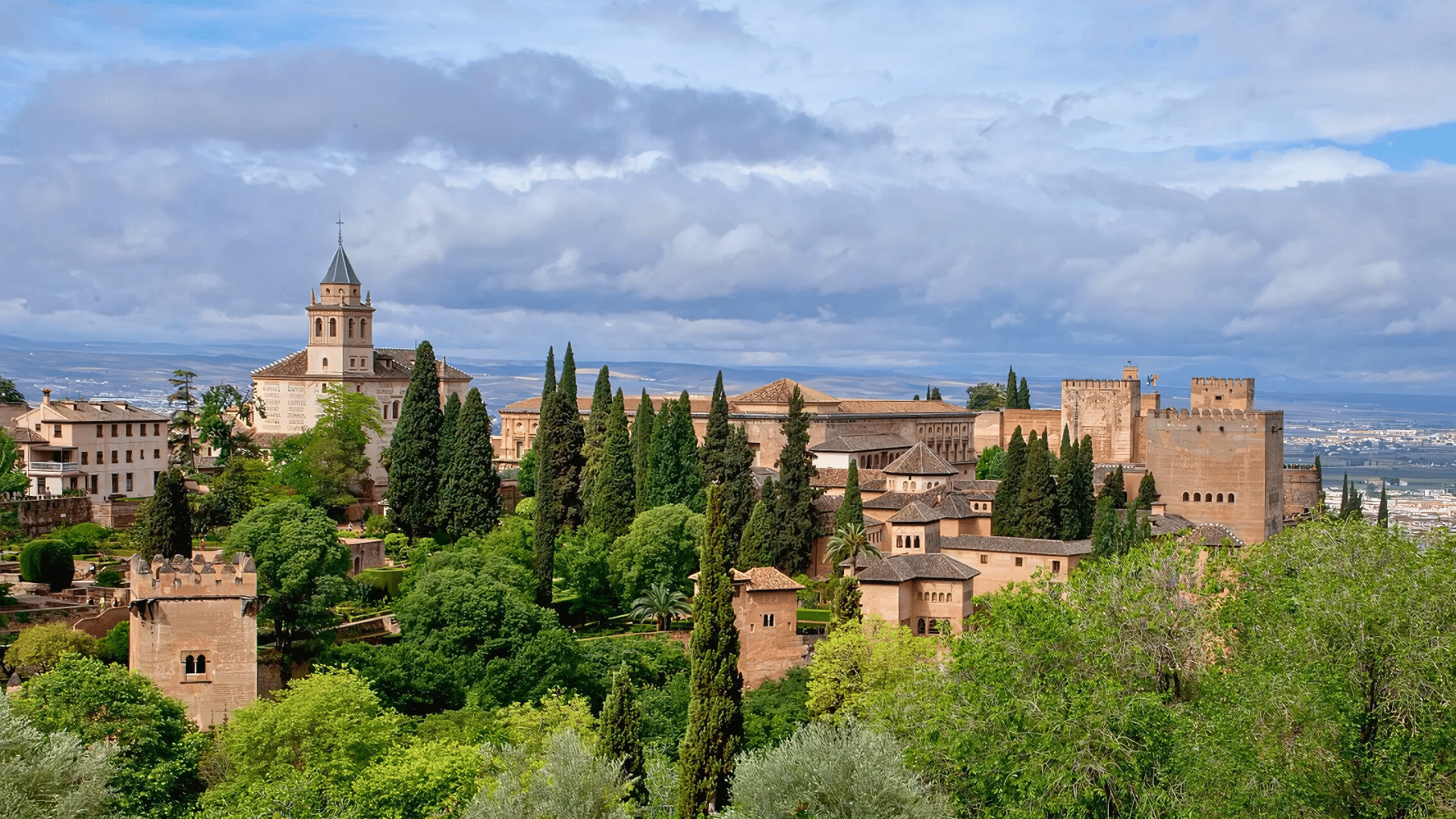
The Alhambra stands as a powerful symbol of Spain’s rich Islamic heritage. This magnificent palace complex captures the imagination with its intricate architectural details and deep historical significance.
Located in the heart of Granada, it represents the height of Moorish design in the Iberian Peninsula.
Year built: 14th century
Style: Moorish architecture
Key feature: UNESCO World Heritage site with breathtaking Islamic design
2. Sagrada Família, Barcelona
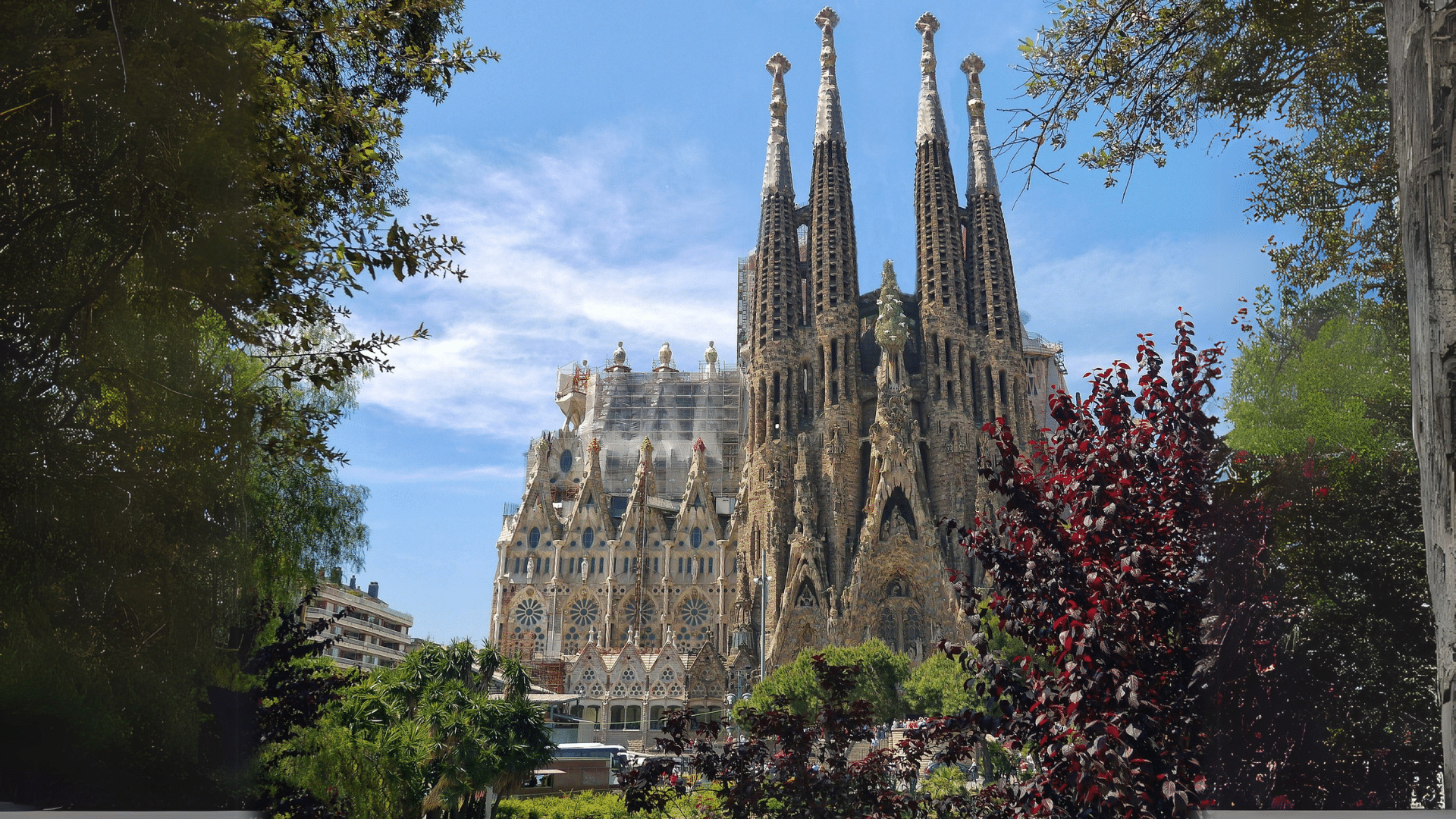
Antoni Gaudí’s most famous work continues to inspire and amaze.
This extraordinary basilica has been under construction for over a century, showing the power of architectural vision and persistent creativity. Its unique design challenges traditional architectural boundaries.
Year built: Started 1882, ongoing
Style: Modernist style
Key feature: Gaudí’s unfinished masterpiece with incredible organic details
3. Royal Palace of Madrid

A symbol of Spanish royal history, this magnificent palace represents the grandeur of Spain’s monarchical past.
Its impressive architecture and rich interior tell stories of royal life and national heritage.
Year built: 18th century
Style: Baroque style
Key feature: One of the largest royal palaces in Europe
4. Mezquita of Córdoba
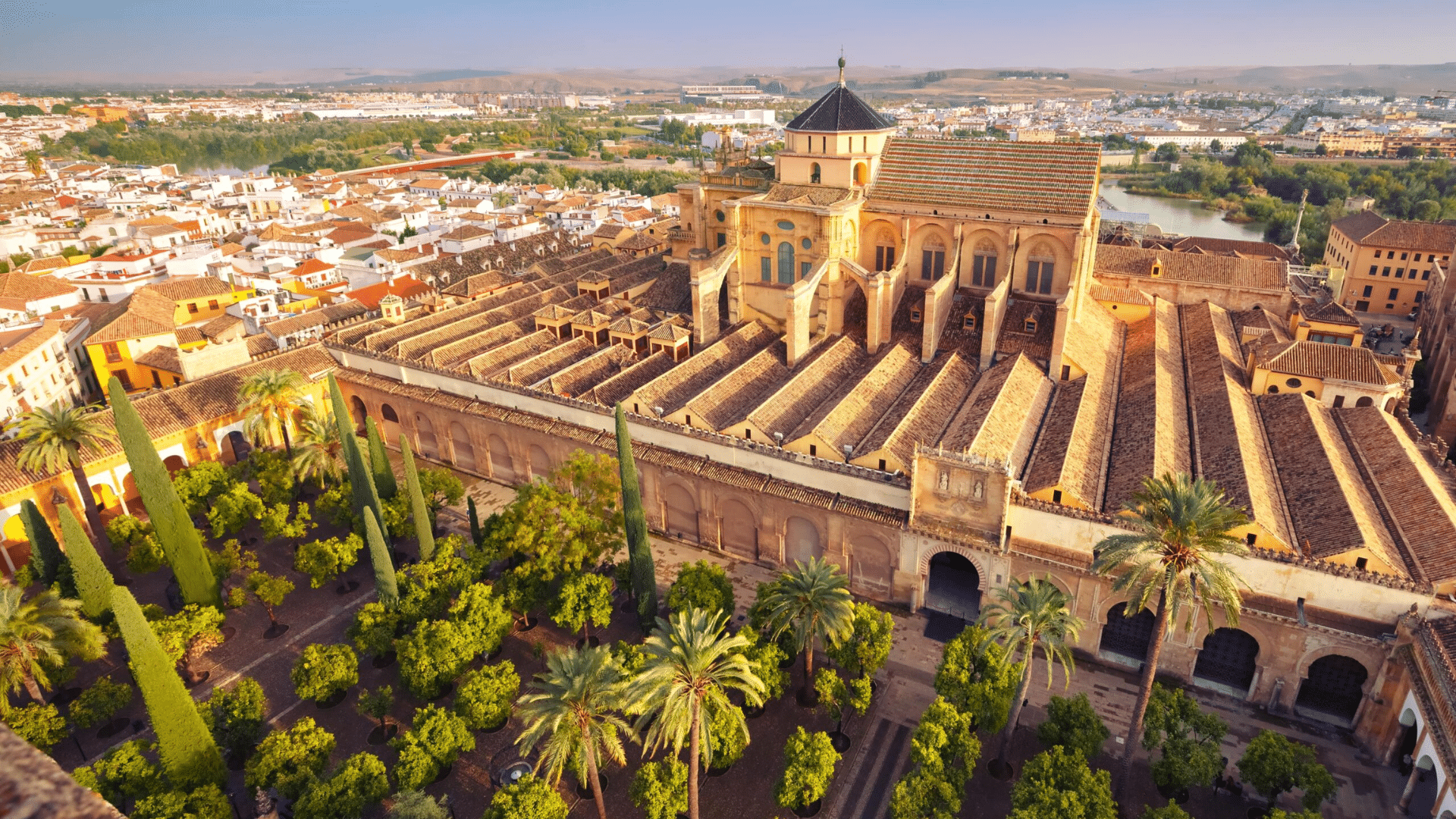
This remarkable building illustrates the complex religious history of Spain.
A unique structure that began as a mosque and was later converted to a cathedral, it stands as a powerful symbol of cultural interchange.
Year built: 8th-10th century
Style: Islamic and Christian architecture
Key feature: Unique mosque-cathedral with arched interior
5. Santiago de Compostela Cathedral

A cornerstone of Christian pilgrimage, this cathedral represents centuries of spiritual and architectural history. Its stone facade tells stories of faith, art, and human dedication.
Year built: 11th-12th century
Style: Romanesque and Gothic
Key feature: Important pilgrimage site with elaborate stone facade
6. Guggenheim Museum, Bilbao
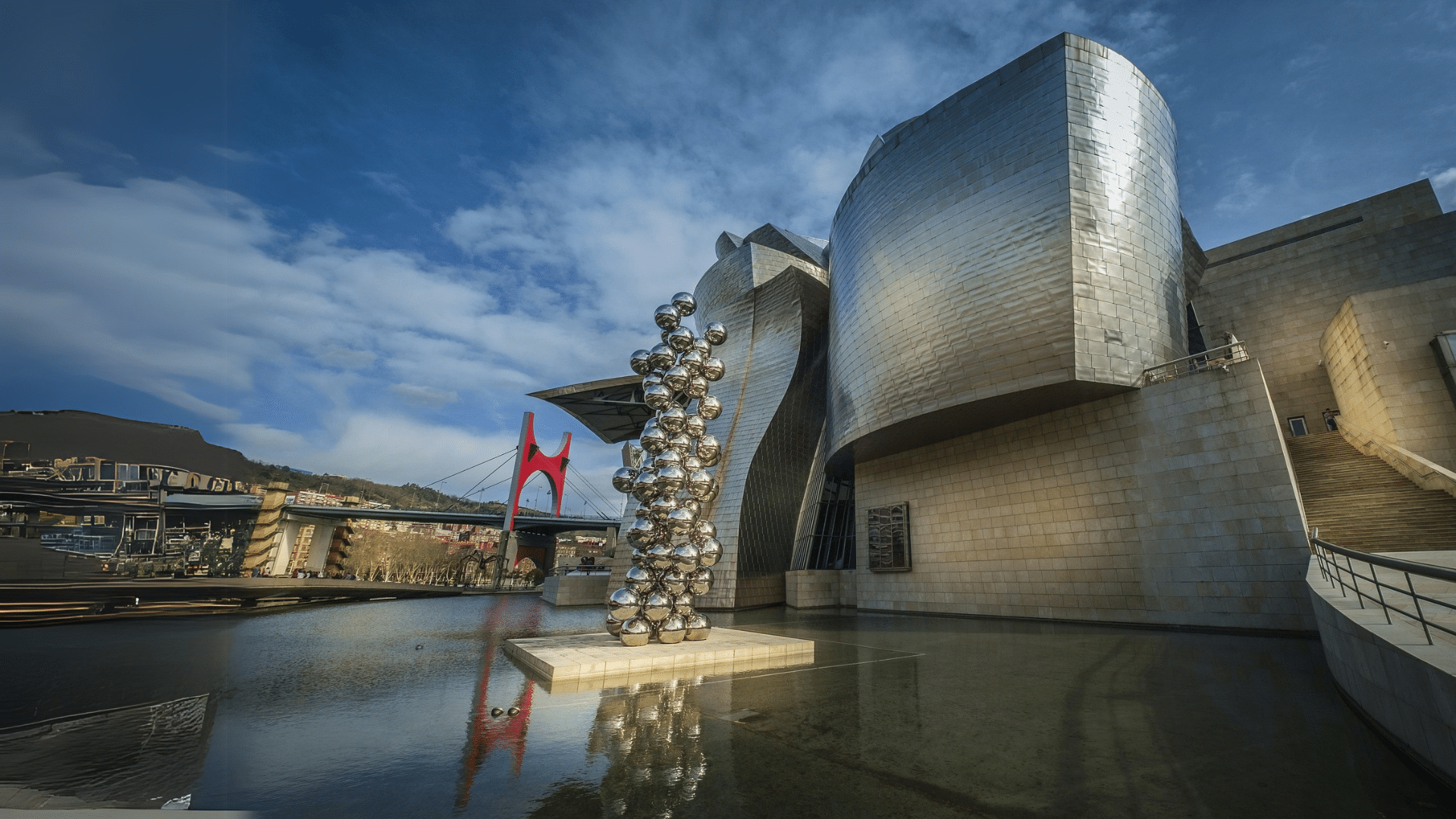
Frank Gehry’s masterpiece, the city of Bilbao and redefined modern architectural possibilities.
Its flowing metal surfaces create a dialogue between architecture and urban space.
Year built: 1997
Style: Contemporary design
Key feature: The city’s architectural landscape with curved metal surfaces
7. Casa Batlló, Barcelona
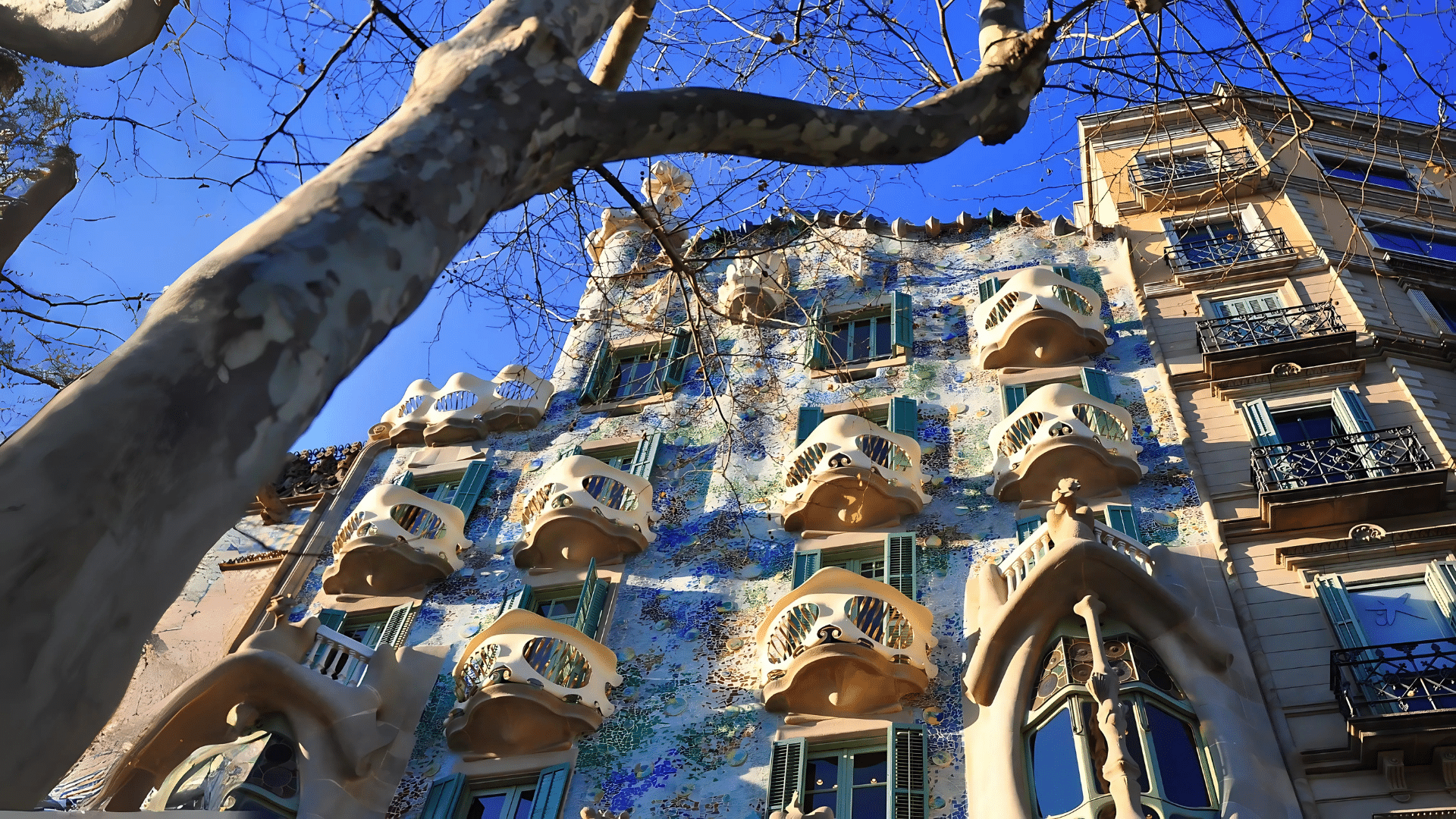
Another Gaudí gem, this building pushes the boundaries of traditional architectural design.
Its organic forms and unique aesthetic challenge viewers to reimagine what a building can be.
Year built: Modernized in early 1900s
Style: Gaudí’s unique style
Key feature: It looks like it’s made from bones and scales
8. City of Arts and Sciences, Valencia
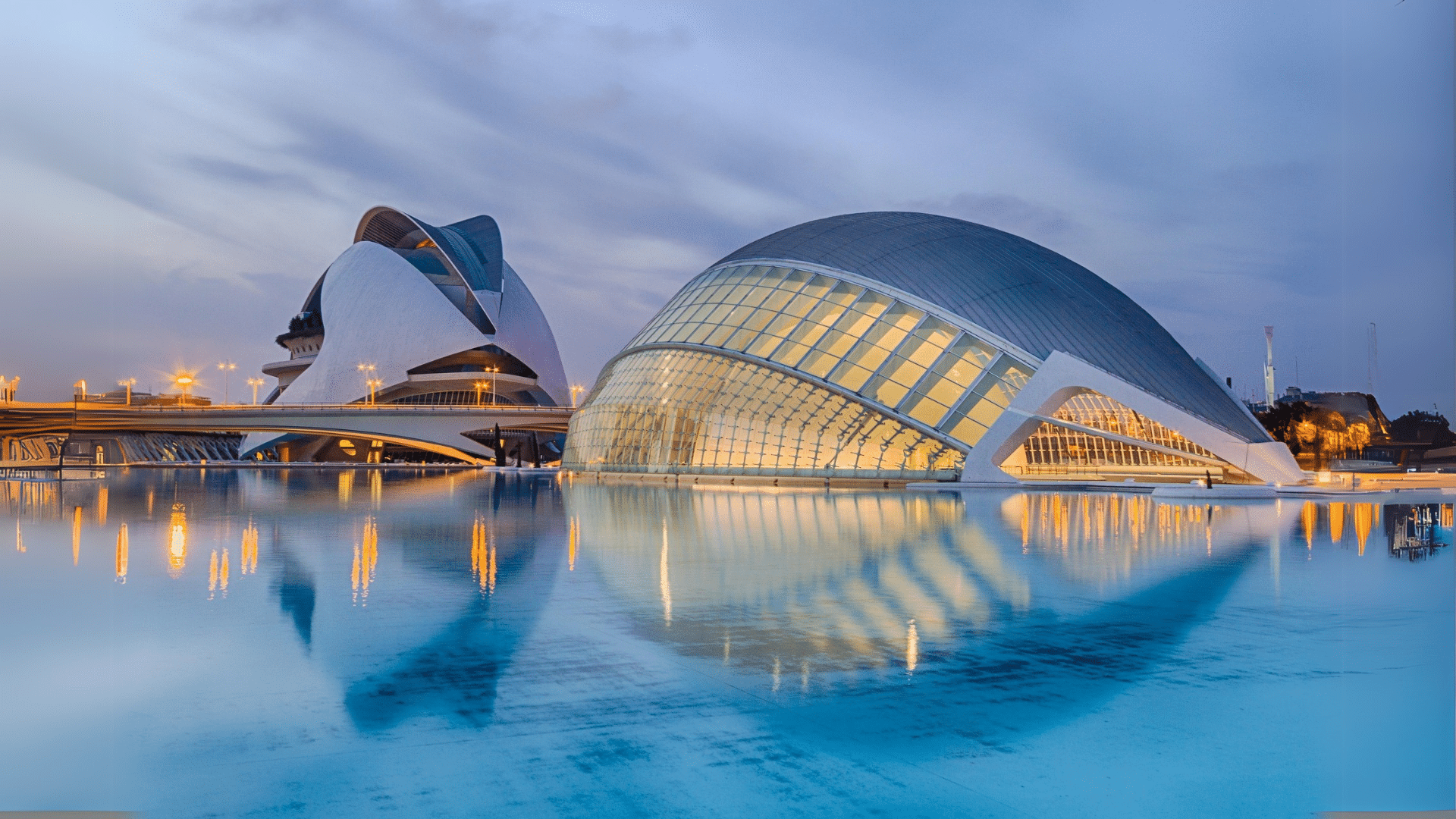
A forward-thinking complex that represents the cutting edge of architectural innovation.
Its white structures seem to defy gravity, creating a landscape that looks more like a science fiction scene.
Year built: Late 1990s-early 2000s
Style: Futuristic design
Key feature: White structures that seem to float
9. Toledo Cathedral
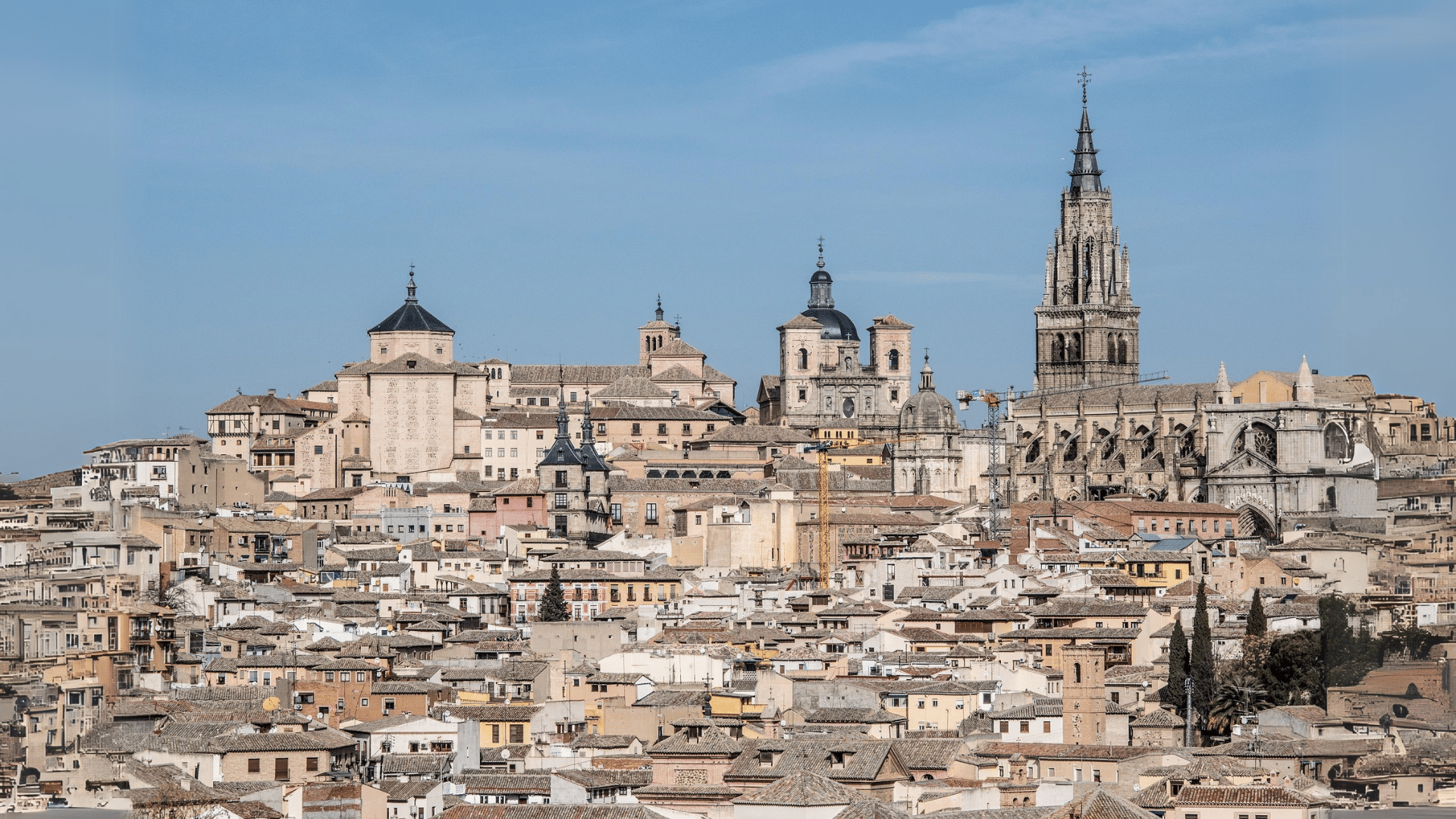
A masterpiece of Gothic architecture, this cathedral stands as a testament to medieval architectural skill and religious devotion. Its massive structure dominates the Toledo skyline.
Year built: 13th-15th century
Style: Gothic style
Key feature: Massive cathedral with incredible stained glass
10. La Pedrera (Casa Milà), Barcelona
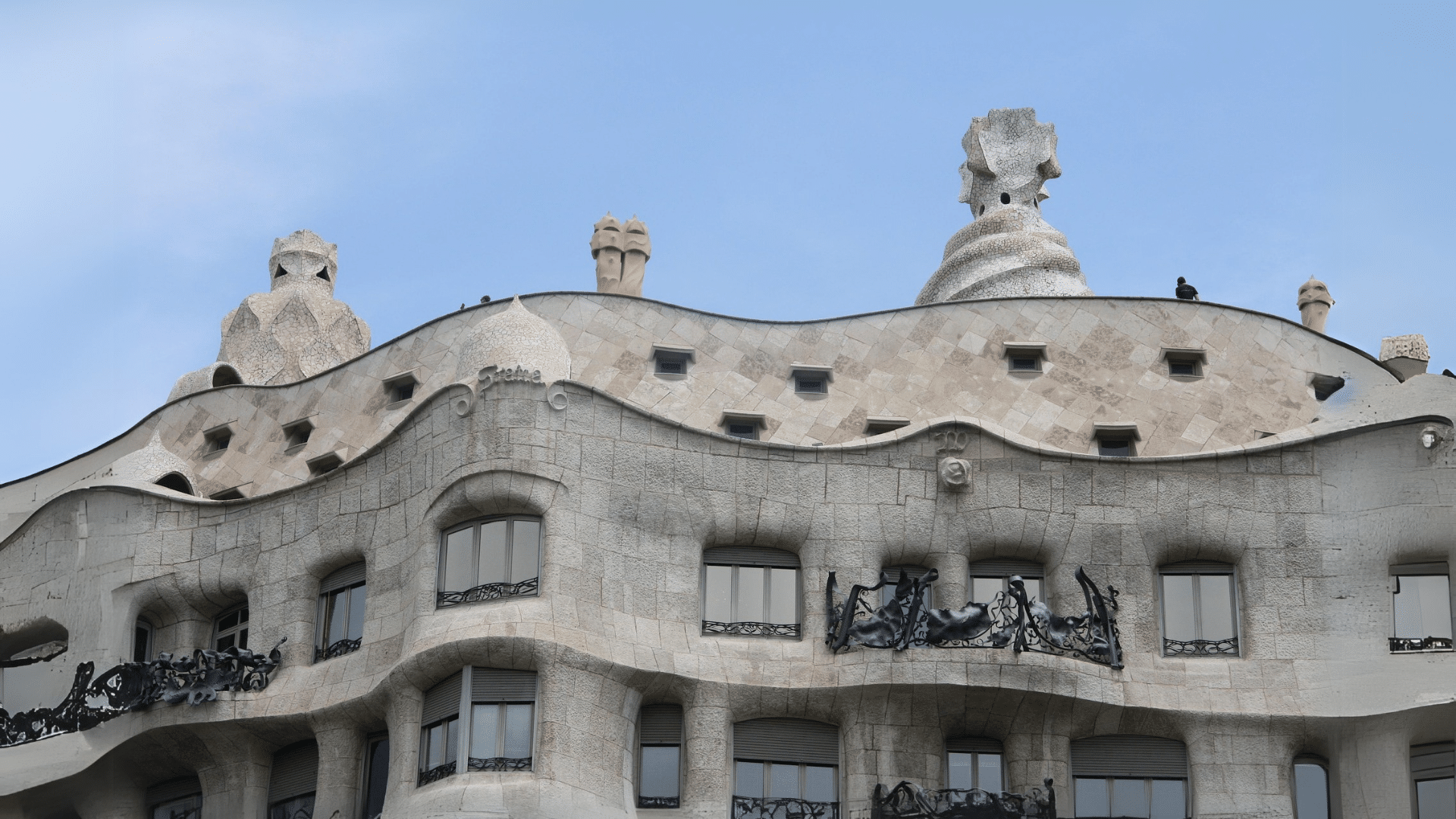
Gaudí’s residential masterpiece challenges conventional building design.
Its undulating facade and unique interior showcase the architect’s revolutionary approach to space and form.
Year built: Early 1900s
Style: Modernist architecture
Key feature: Wavy stone facade with no straight lines
11. Seville Cathedral
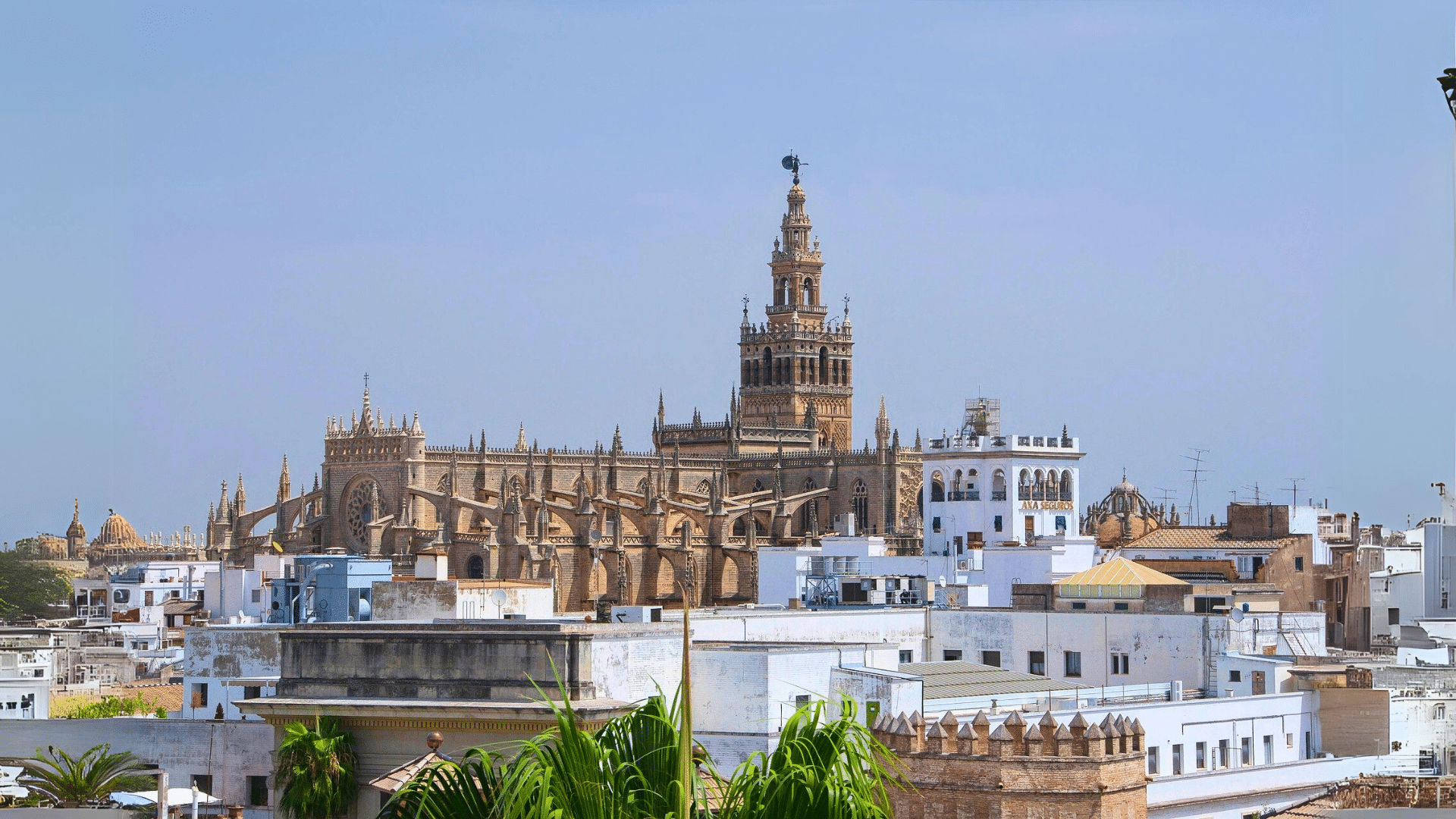
The world’s largest Gothic cathedral stands as a monumental achievement of architectural and religious significance. Its massive scale and intricate details continue to inspire awe.
Year built: 15th-16th century
Style: Gothic and Renaissance
Key feature: World’s largest Gothic cathedral
12. Alcázar of Segovia
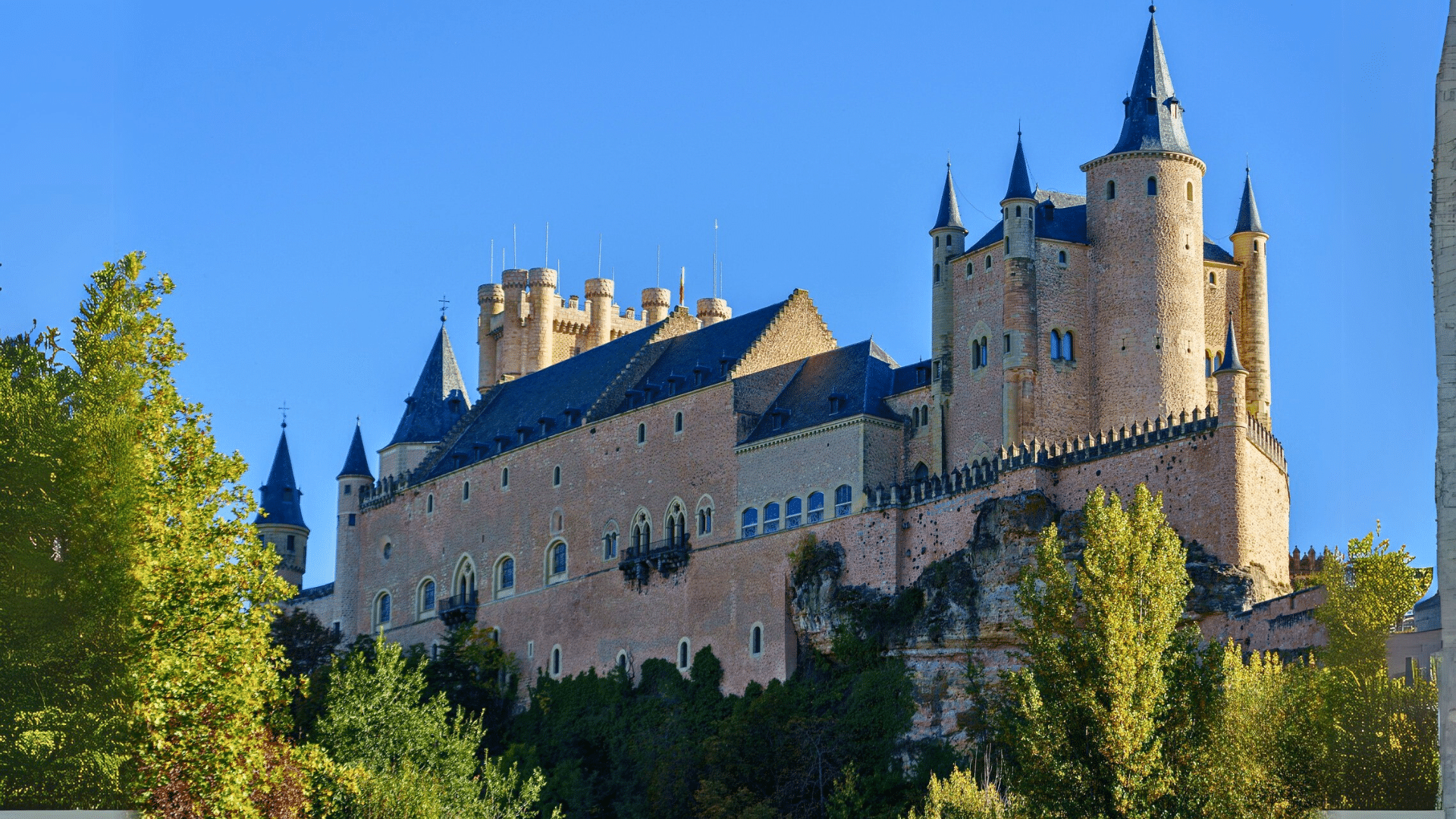
A fairytale-like castle that seems to spring from a storybook, this fortress combines military architecture with royal elegance.
Its unique silhouette is instantly recognizable.
Year built: 11th century, rebuilt 15th century
Style: Medieval castle
Key feature: It looks like a fairytale castle on a hilltop
13. Park Güell, Barcelona
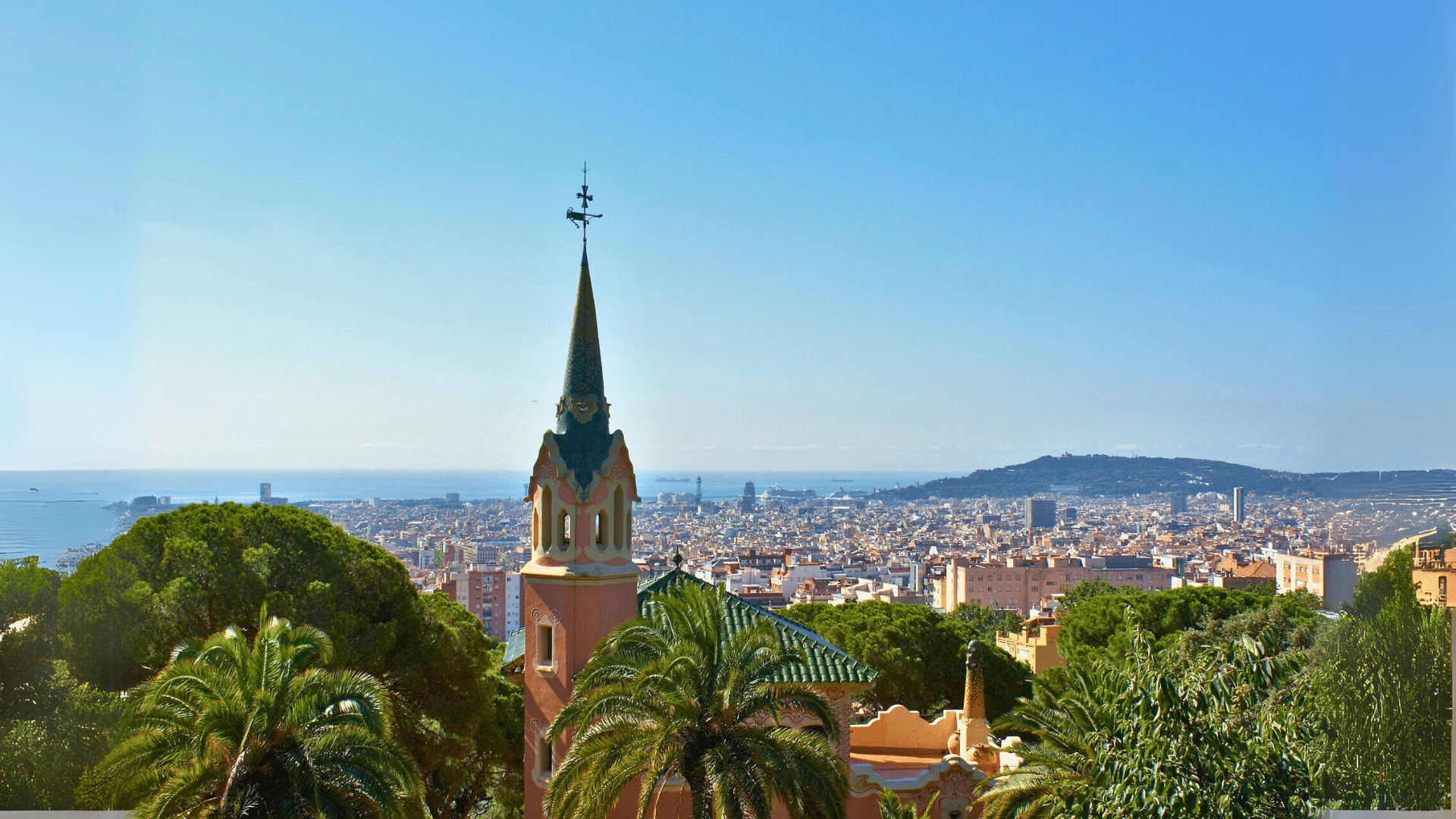
Gaudí’s public park is a whimsical landscape of architectural creativity. Colorful mosaics and unique structural elements changed a simple park into an artistic wonderland.
Year built: Early 1900s
Style: Gaudí’s landscape design
Key feature: Colorful mosaic park with unique architectural elements
14. Plaza de España, Seville
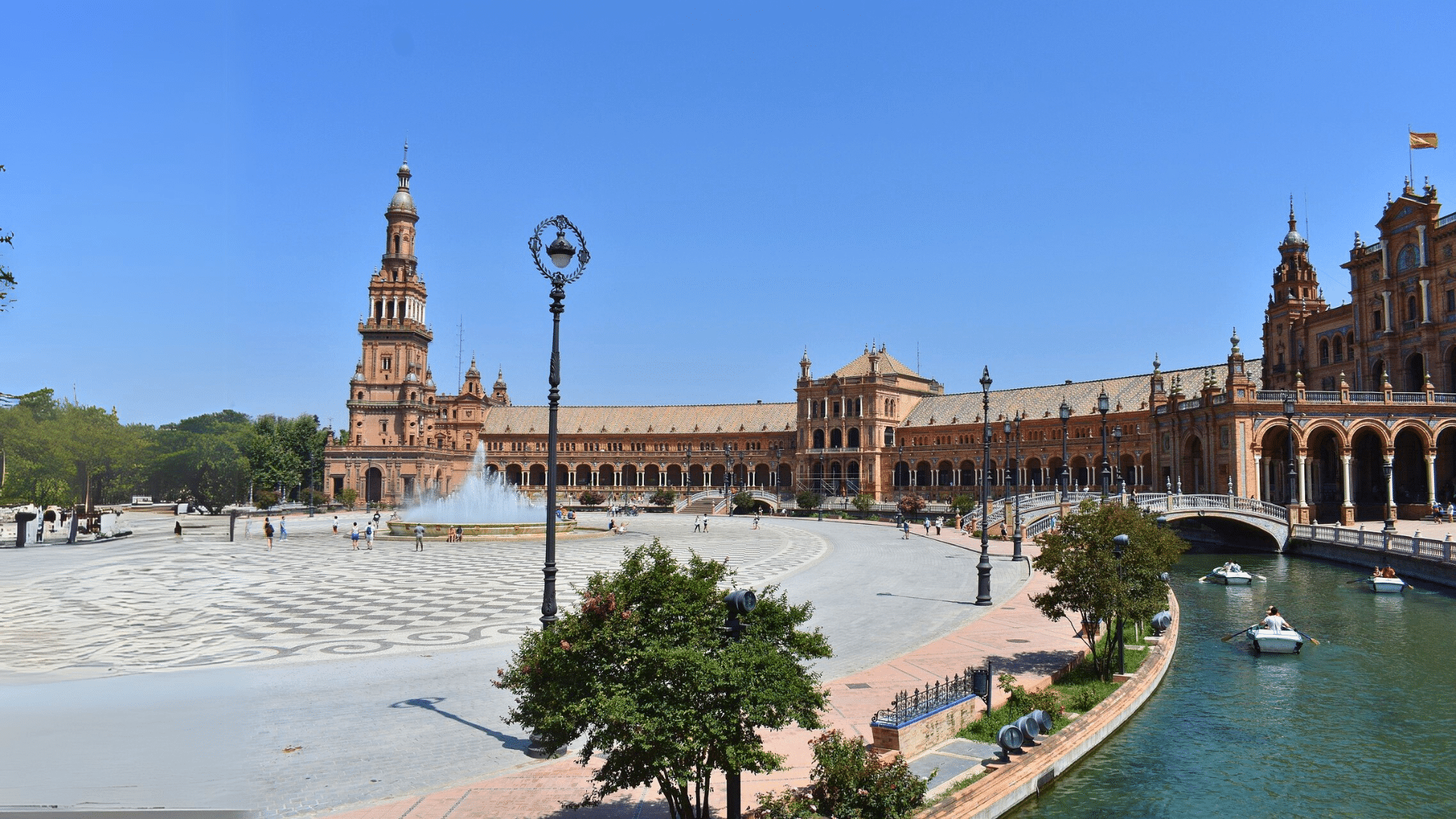
A grand architectural ensemble that showcases the beauty of Spanish Renaissance Revival style. Its massive semicircular design and intricate ceramic tiles create a breathtaking urban space.
Year built: 1920s
Style: Renaissance Revival
Key feature: Massive semicircular plaza with beautiful ceramic tiles
15. Burgos Cathedral
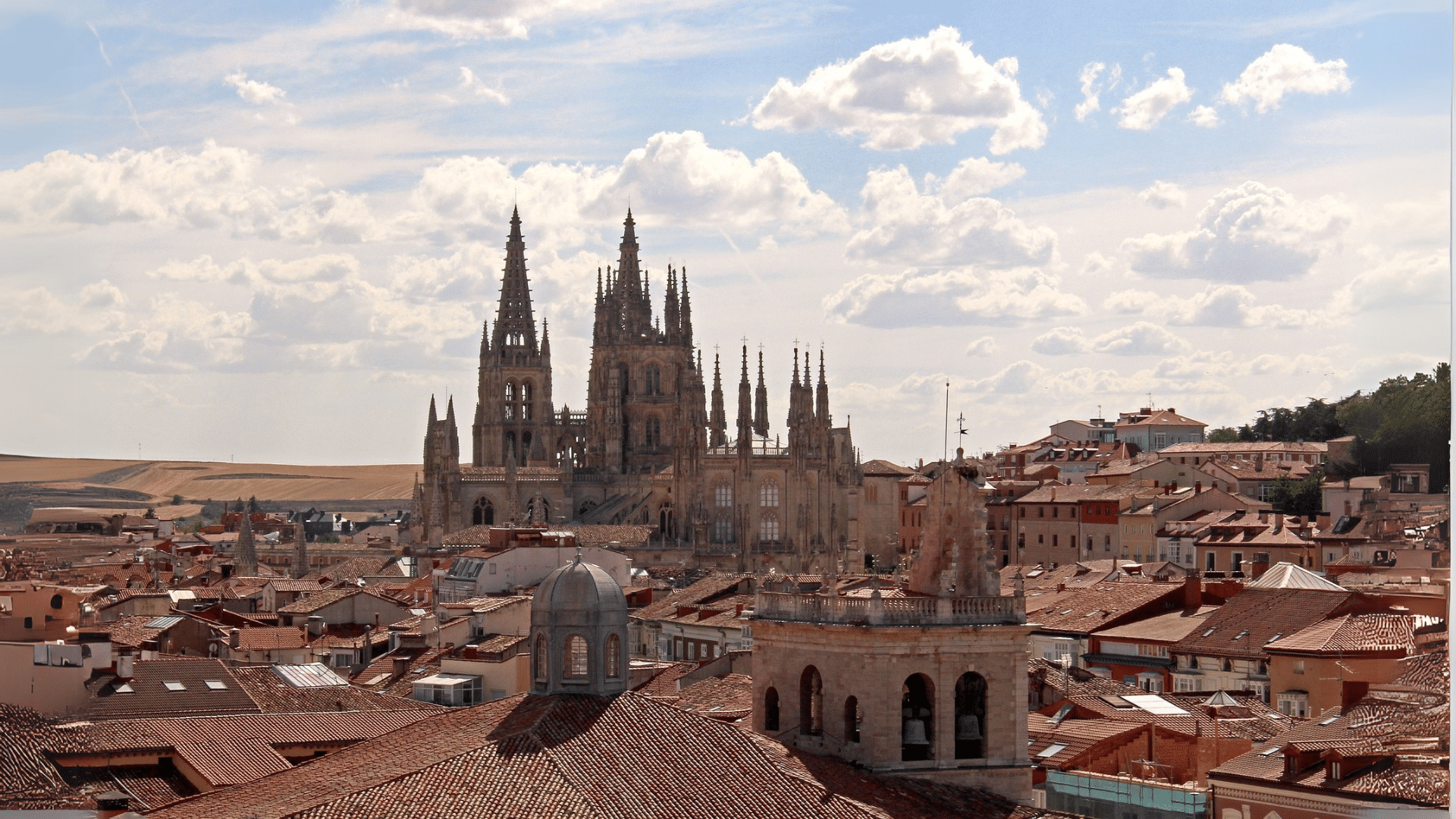
A pinnacle of Gothic architectural achievement, this cathedral combines intricate stone carving with spiritual grandeur. Its detailed facade tells stories in stone.
Year built: 13th-16th century
Style: Gothic style
Key feature: Incredible stone carvings and detailed architecture
16. Monastery of El Escorial
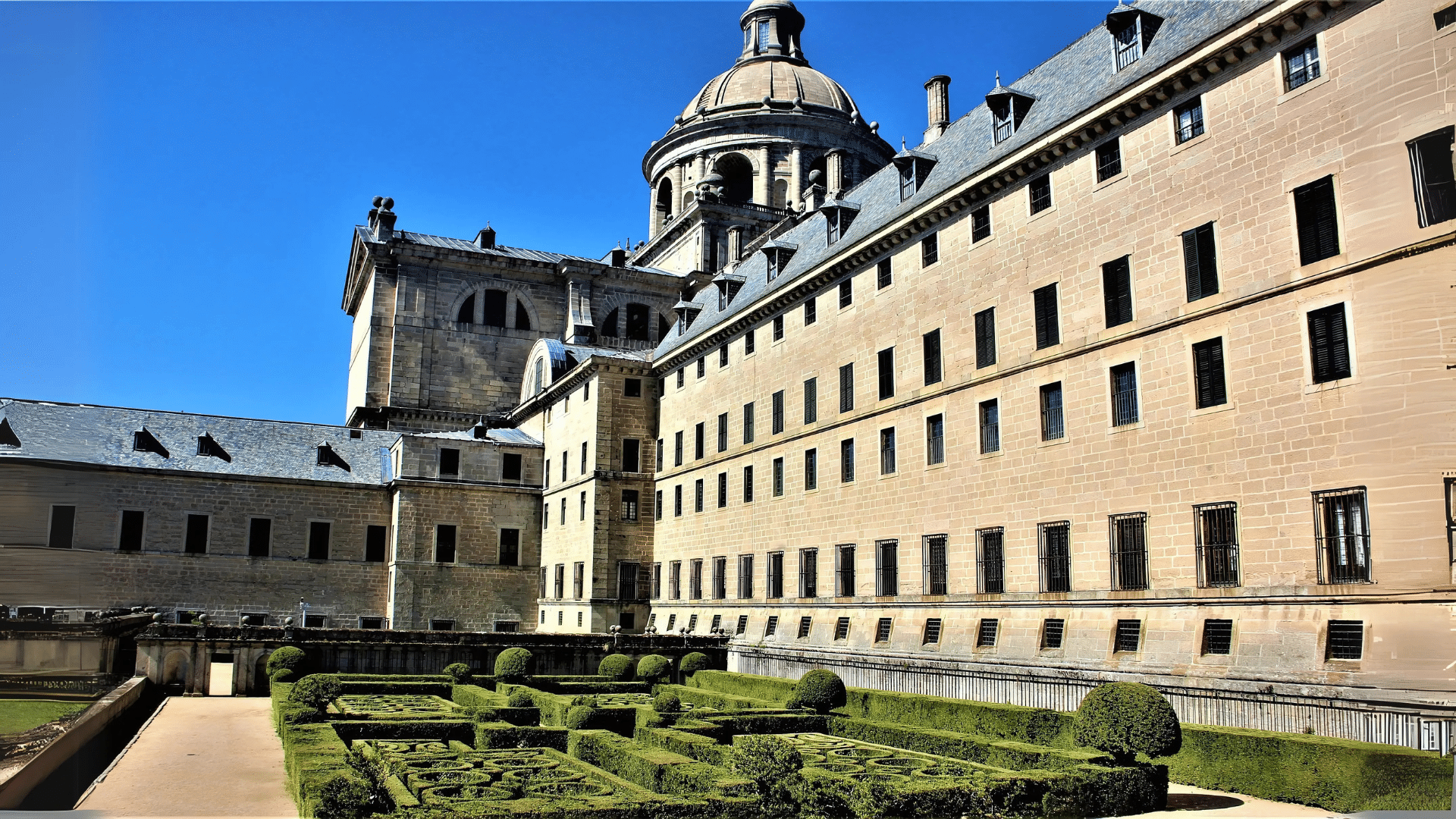
A massive complex that combines a palace, a museum, and a monastery. Its Renaissance architecture reflects the power and cultural sophistication of Spain during its golden age.
Year built: 16th century
Style: Renaissance architecture
Key feature: Massive complex combining palace, museum, and monastery
17. Barcelona Pavilion
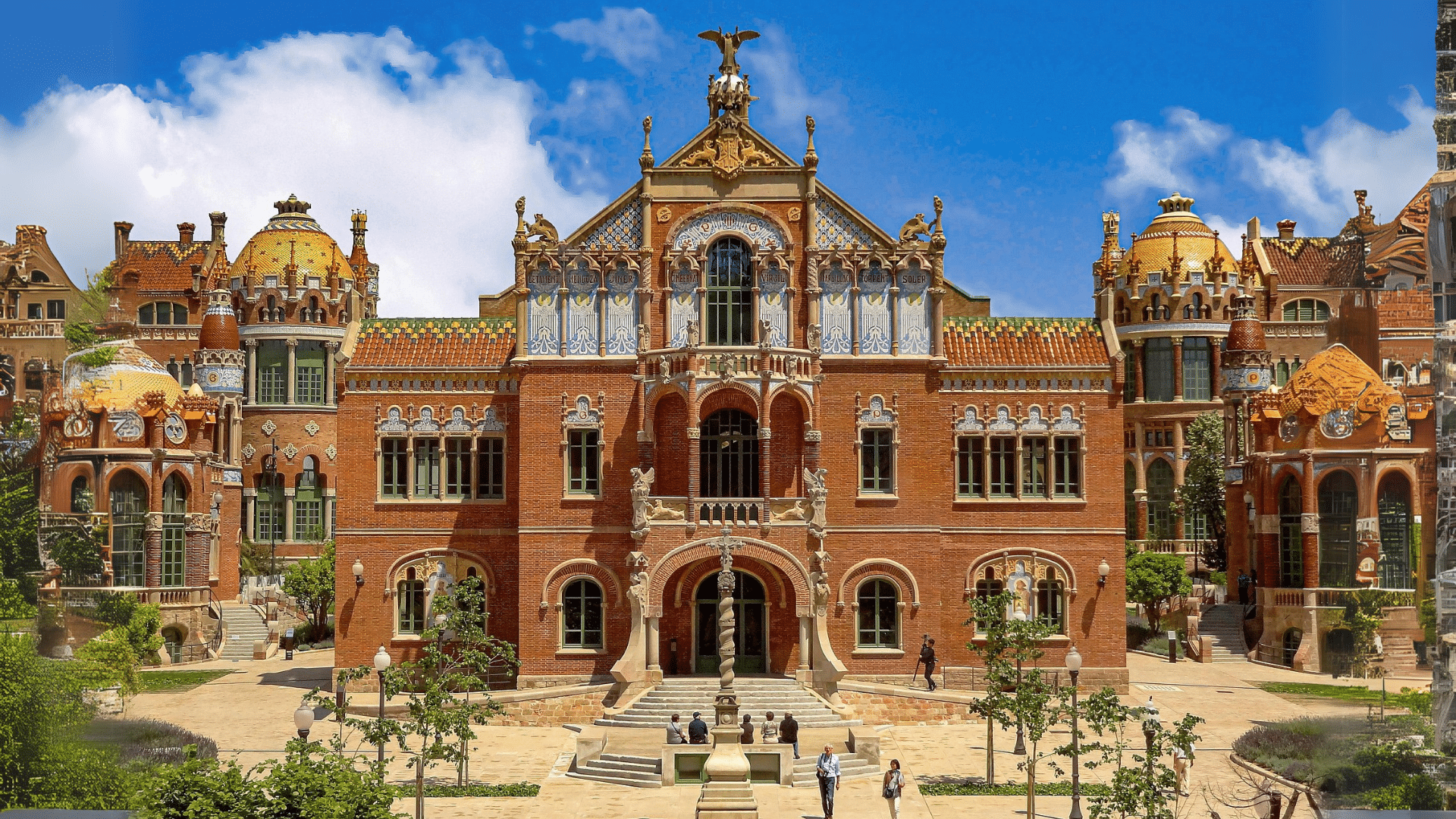
A minimalist masterpiece that revolutionized modern architectural thinking.
Designed by Mies van der Rohe, it represents the essence of modernist design principles.
Year built: 1929
Style: Modernist design
Key feature: Minimalist masterpiece by Mies van der Rohe
18. City Hall of Barcelona
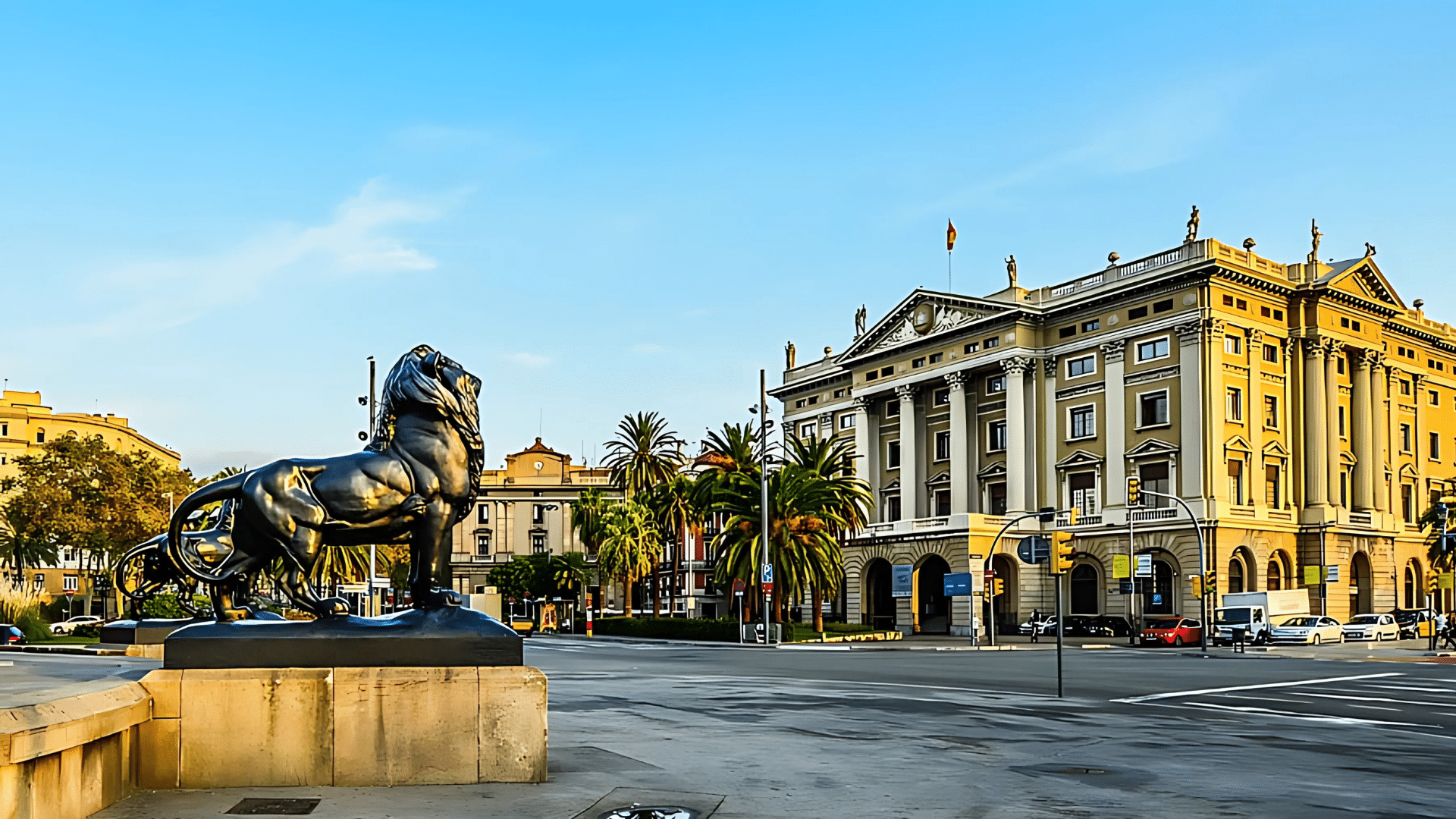
It is a beautiful example of Gothic urban architecture that reflects Barcelona’s historical importance. Its medieval design continues to captivate visitors.
Year built: Gothic period
Style: Gothic architecture
Key feature: Medieval building in the city center
19. Roman Aqueduct of Segovia
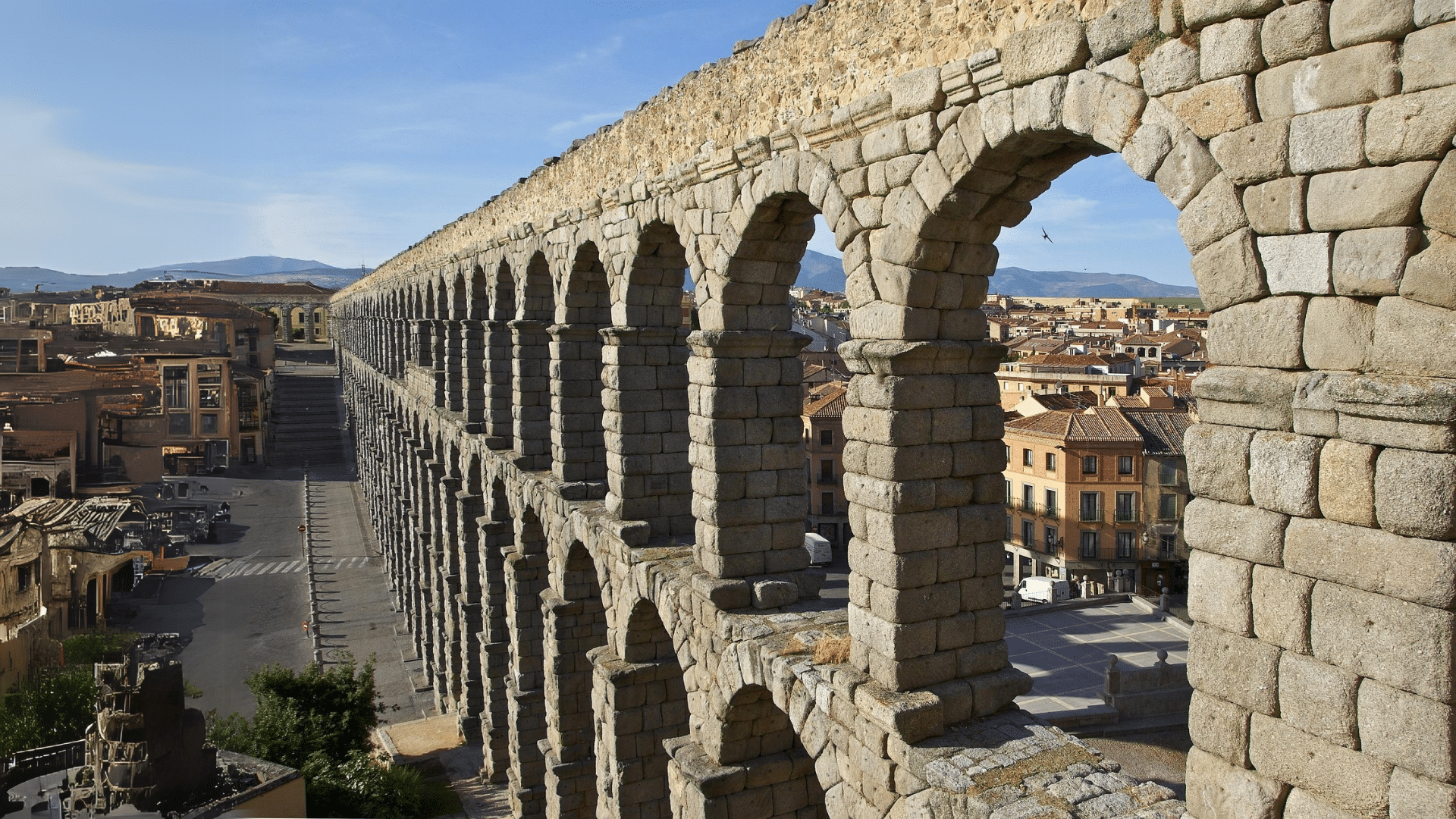
An incredible testament to Roman engineering that has survived for nearly two millennia. This structure demonstrates the advanced technical skills of ancient builders.
Year built: 1st-2nd century AD
Style: Roman engineering
Key feature: Perfectly preserved ancient water transport system
20. New Museum of Contemporary Art, Barcelona
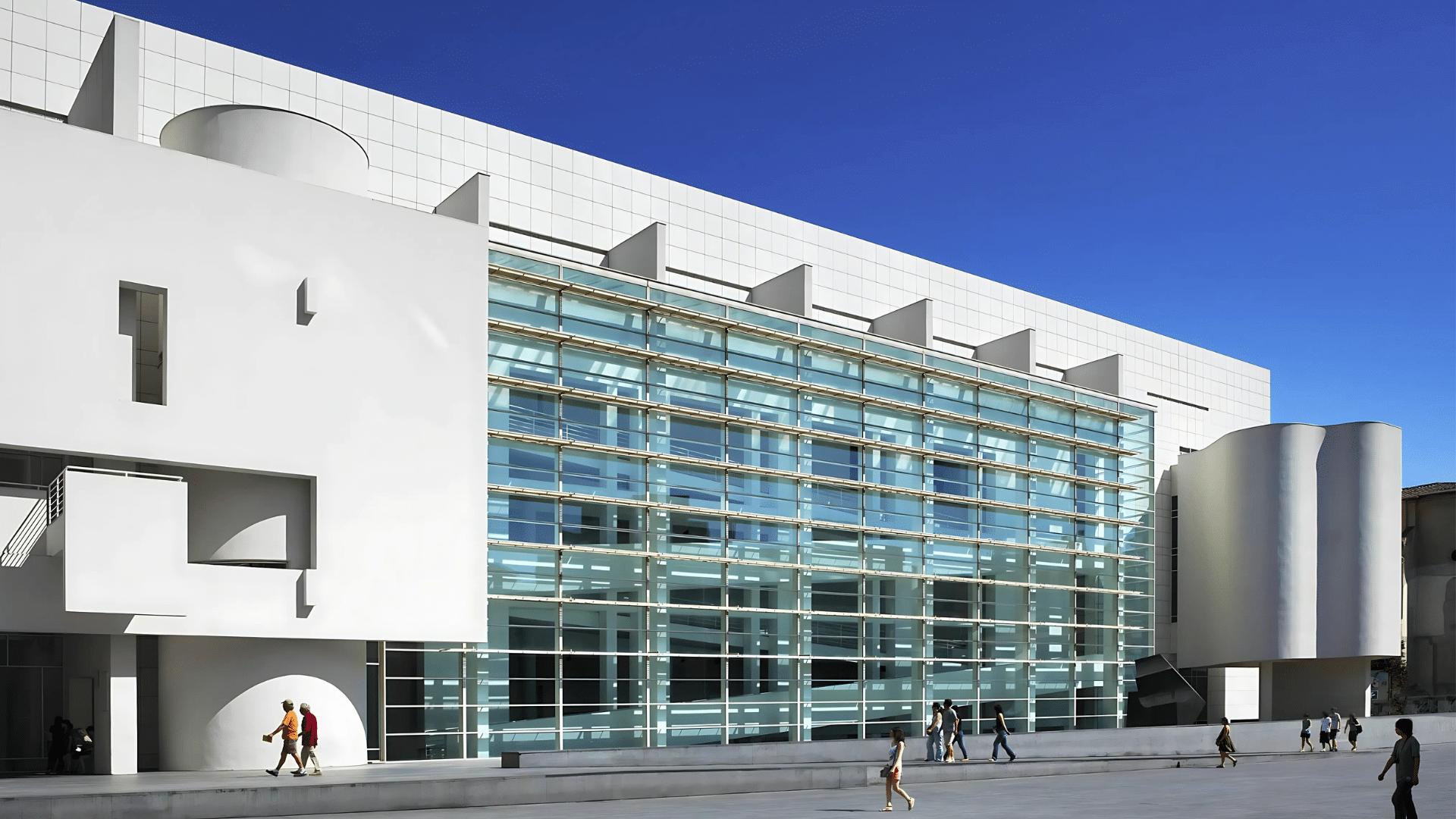
A modern architectural statement that represents the ongoing innovation in Spanish design.
Its contemporary approach reflects the dynamic nature of Spanish creativity.
Year built: 2010
Style: Contemporary design
Key feature: Represents modern Spanish architectural innovation
Top Architects Who Shaped Spain
Spain’s buildings tell stories of creative minds who changed cityscapes. These makers turned stones and metals into living art that speaks to generations.
Their work changed how we see spaces, creating structures that go beyond simple buildings. Each design reflects a deep connection to culture, history, and human experience.
From wild imagination to careful planning, these creators left a lasting mark on Spain’s visual world.
- Antoni Gaudí: The most famous Spanish architect, Gaudí revolutionized design with organic, flowing structures. His works in Barcelona, like Sagrada Família and Casa Batlló, challenge traditional architectural concepts.
- Santiago Calatrava: Known for futuristic, sculptural designs, Calatrava creates buildings that look like living organisms. The City of Arts and Sciences in Valencia showcases his unique vision.
- Rafael Moneo: A more understated architect who focuses on subtle, contextual designs. He has created significant buildings worldwide, always respecting local architectural traditions.
- Ricardo Bofill: An Innovative architect known for large-scale urban projects and unique residential designs. His work often combines geometric precision with creative vision.
Architecture by Region in Spain
Spain’s architectural landscape is a rich tapestry of regional diversity and cultural expressions. Each region tells a unique story through its buildings, reflecting local histories, traditions, and creative spirits.
From the Mediterranean coast to the northern mountains, the country’s structures capture the essence of local identities and historical changes.
Barcelona & Catalonia
This region is a paradise for architecture lovers, especially with the works of Antoni Gaudí. Modernism flourishes here, and his iconic structures like the Sagrada Família and Park Güell dominate the skyline.
The Gothic Quarter, with its medieval streets and historical buildings, offers a step back in time, showcasing Barcelona’s rich architectural heritage.
Andalusia
In Andalusia, Moorish architecture shines, with the Alhambra in Granada standing as the peak of Islamic design. Its intricate tilework, courtyards, and stunning gardens make it a must-see.
The region also boasts other beautiful examples of Islamic and Christian architectural fusion, like the Mezquita in Córdoba and the Alcázar of Seville.
Madrid
Madrid, the capital, offers a blend of royal structures and modern designs. Historic palaces like the Royal Palace sit alongside modern buildings, creating a vibrant architectural contrast.
The city’s planning integrates grand plazas, wide boulevards, and impressive museums, offering a dynamic mix of old and new.
Northern Spain
Northern Spain presents a mix of history and modernity. Santiago de Compostela’s historic cathedral contrasts with the modern Guggenheim Museum in Bilbao.
This region shows off a range of architectural styles, from medieval buildings to contemporary designs, providing a rich and diverse experience for architecture enthusiasts.
Conclusion
Spain’s architectural history goes beyond simple buildings.
We’ve traveled through centuries of creative expression. From ancient walls to modern wonders, each structure tells a unique human story.
The buildings we’ve seen reflect more than history—they show how people connect, adapt, and dream.
Our tour touched different regions, styles, and moments. We saw how cultures mix, clash, and create something beautiful.
Creators like Gaudí didn’t just build—they changed how we see spaces.
Next time you look at a building, remember: it’s more than walls. It’s a living memory of human creativity, passion, and strength.
Spain’s architecture invites us to see the world through a lens of wonder and connection.

